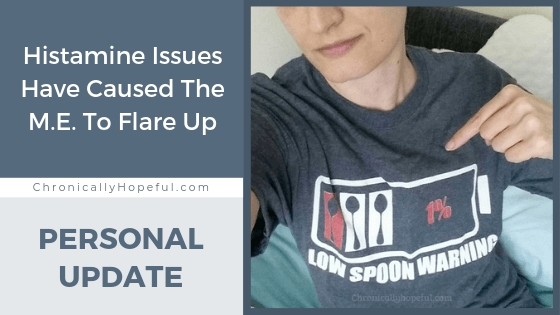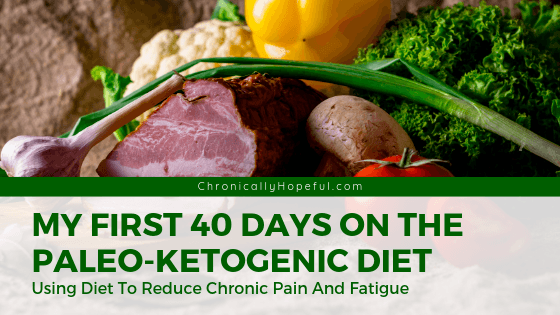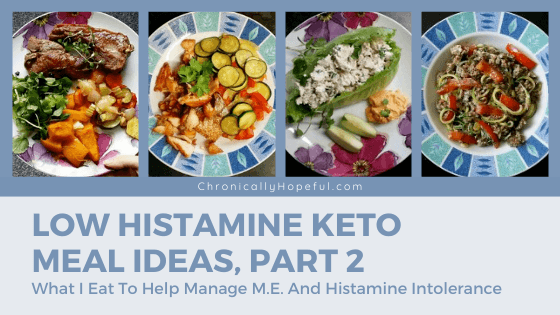Since starting Dr Myhill’s recommended diet, I have had quite a few requests for a basic meal plan. Many people find it hard to navigate through all the information that is out there, specially us spoonies with brain fog! I have had a while to work through the relative chapters in the book and have been on this journey for 6 weeks now. I am starting to feel the benefits!
This is the very first meal plan outline I gave my mum after I got Dr Myhill’s book. It helped her to wrap her head around this new way of eating and build my meals in a way that was not too daunting for her. I hope you will find it helpful too!
I will eventually have downloadable weekly meal plans available, I’m just not quite ready for that yet. Please let me know if there is anything specific you’d find helpful.
Top Tips For Starting A Ketogenic Diet
- Get familiar with the labels on your products. They tend to follow a pattern, so you can learn to find the carbohydrate, fat and protein content easily.
- No Sugars – make sure the packaged food you buy contains no sugar. That includes anything ending in -ose, like fructose or lactose and maltodextrin.
- No grains – that means no wheat, flour, corn, barley, oats or potato starch which are often used as thickeners in sauces/gravy, etc.
- Try to use fresh ingredients as much as possible. Frozen berries and vegetables are healthy too.
- Tinned fish and deli meats are okay to eat, just check sugar and starch content on labels, as mentioned above, and be careful if you have histamine intolerance as these foods will be high in histamine and might cause a reaction.
- If you have a fitbit or similar activity tracker, it can give you an idea of how many calories you burn in a day, and this can help you to decide on portion sizes, but as a rule, only eat when you’re hungry, and stop when you’re full.
- Make sure to add good mineral rich salt (pink himalayan or grey celtic) to your diet, you can also use elctrolyte drinks to restore minerals lost as the ketogenic diet is diuretic.
* For people with ME: the mineral salts will help you feel better too as they will aid in hydration which helps increase blood volume, this will help counteract the Orthostatic Intolerance and heart palpitations we often get from being upright. Don’t skip the salt!
Paleo-Ketogenic Dinner Ideas
I tend to build my meal around the protein I’ve chosen for that meal and decide how I’m going to cook it. This will help me decide which fat I will use and which vegetables you’d like to pair it with.
For example, if I’m using a roasting meat, I’ll use ghee, but if I’m pan frying, I will usually use coconut oil. Mainly because my coconut oil is solid and will easily melt in a frying pan, but it’s easier to coat oven roast items in ghee since my ghee is quite liquid.
I’ll then choose the accompanying vegetables or sides. Again, I’ll decide how I’m cooking them to choose an oil. Olive oil is used raw for drizzling over cooked vegetables or salads.
Basic construction of a meal
- Protein – meat or fish
- Carbohydrates & Fibre – vegetables, salads, berries and avocado
- Fat – oils and fats, fatty meat cuts, skins, drippings, nuts, seeds and avocado
This way of eating is quite restrictive in some ways, but you can still enjoy many wonderful dishes full of healthy and tasty ingredients. Things like slow cooker meals, stews, roast dinners, stir-fries, curries, bone broth and soups.
You do not have to limit yourself to boiling and steaming, you’ll likely run out of energy quickly if you do, so use those good natural fats and enjoy herbs and spices to flavour your food – even if your aim is to lose weight – because without all the added carbohydrates and sugars, your body will be using fat for fuel!
Drinks: Water, Tea, Coffee (No caffeine after 2pm)
Click Here For My Favourite Meals & Recipes
Paleo-Ketogenic Breakfast Ideas
This is the meal that breaks your overnight fast and gives you energy to start the day, make it nutritious and fat-filled.
- CoYo with seeds/nuts, 2 boiled eggs
- Eggs with bacon or salami, half an avocado
- CoYo with berries and seeds/nuts, 1 egg
- 2 eggs and some nuts, berries and tahini
- Chia pudding: seeds soaked in coconut milk overnight, add berries, tahini, nuts/nut butter in the morning and eat like porridge
- Omelette with mushrooms or peppers, bacon, spinach, etc
Drinks: water, coconut/water kefir, tea, coffee, etc
See my post about Paleo-Ketogenic Breakfast and Snack ideas!
Paleo-Ketogenic Lunch Ideas
- Leftovers from dinner, include fat (oil, nuts, avocado, coconut milk) and fibre (veg/seeds)
- Grilled meat/fish/chicken/eggs with salad, seeds, olive oil, avocado
- Tinned fish/salami/eggs with boiled/steamed/stir-fried veg (use olive oil, ghee, coconut oil)
- Oven roasted meat/fish with vegetables or salad (see veg/salad ideas below), avocado
- Slow cooker stews/soups
Drinks: Water, tea, coffee
Paleo-Ketogenic Snack Ideas
- 90% chocolate and tahini/nuts
- Berries and tahini/nuts
- Salami and olives
- Veg sticks with homemade guacamole dip
- CoYo and berries
- 90% chocolate and nut butter (also try nut butter on celery sticks!)
Drink: water, half glass of coconut milk
Dr Myhill’s Books On The Paleo-Ketogenic Diet
Low Carb Vegetables
Here is a list of low carb vegetables you can enjoy, they’re roughly in order from least carbs to most carbs:
Courgette, green/leafy vegetables (e.g. spinach, watercress, cabbage, cauliflower, broccoli, kale), turnip, garlic, mushrooms, green beans, aubergines, peppers, onions, swede, carrot, butternut squash, leek.
You should aim to eat more leafy green vegetables for lower carbs and more fibre and generally keep away from root vegetables as they contain more carbs.
Paleo-Ketogenic Salad Ideas
Salad Base:
Choose fresh leafy greens that are high in nutritional value. Generally darker leaves are more nutritious, but if you suffer from Histamine Intolerance like me, then you will need to stick to heads of lettuce rather than loose leaf varieties – Romaine being quite nutritious.
- salad greens
- spinach
- rocket
- watercress
Salad Toppings:
You can use a variety of vegetables, berries, seeds and nuts to make interesting salads. Some of my favourite ingredients are listed below, try different combinations – you might find a new favourite:
- some tomato (high carb, be careful), blueberries, raspberries
- avocado, nuts, seeds
- peppers, spring onion, radishes, celery, cucumber
- cooked or raw mushrooms, zucchini, broccoli
- olives, sauerkraut and other fermented/pickled vegetables (no sugar!)
- any protein you would like (bacon, grilled chicken, boiled egg, fish, etc).
Salad Dressings:
My favourite is olive oil, salt and vinegar, but there are some interesting combinations you could try using:
- olive oil
- lemon juice
- vinegar
- mustard
- herbs and spices
- homemade mayo
- crushed garlic or ginger
- and remember the salt!
Dr Myhill does allow for butter on her diet, she says it’s the safest dairy. You can use ghee instead, clarified butter. There are many foods I haven’t mentioned, things like pasta substitutes and seafood dishes. There are some very exciting dishes you can still enjoy on this plan. I will post more about them soon.
In the meantime, if you’d like to see all my favourite meals and some paleo-ketogenic recipes, you can find them all in the Eat To Heal section of my blog.
Feel free to ask questions or share advice in the comments below, or you may contact me privately here.
For more information regarding Dr Myhill’s work, please visit her website here.

Pin This Post!

Let’s Stay In Touch
Housebound Lifestyle: Facebook | Instagram | Twitter M.E. Awareness: Facebook | Instagram | Twitter | The ME/CFS Community Vibrant Hope Art: Facebook | Instagram | Twitter Support My Work: Buy My Art | Shop My Favourite ThingsOr if you’d like to send me something, here’s my Amazon Wishlist – Thank you!
![]()
This blog was designed using Thrive Themes.











Hi, daughter has ME and we both have mast cell activation… would love to go keto but so hard to do low histamine and keto at same time… we are fighting mold too, I wonder if your old house had some hidden mold as you felt better when you left?
Hi Julia, Thank you for your comment. It must be so hard for you both to be dealing with these conditions. It is certainly not easy to do keto and low histamine unfortunately. And for us who have limited energy and brain fog, it becomes quite complicated to work things out. I hope to share my food lists and some meal plans in the future, but I cannot predict when that might actually happen in my current state.
As for the mould, I live in the UK where it’s pretty damp throughout the year and I’m not sure I’ve had a single house that doesn’t have mould in it, and I’ve moved every couple of years, so that’s about 8 different houses. The last 2 were the least affected, the 2 before that were quite bad, so it might be why I’ve been able to stabilise, even if I’ve not really had any sort of long-term improvement trend.